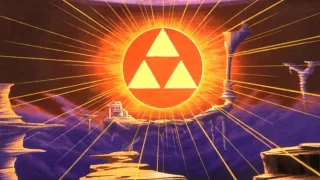Link’s Awakening is without a doubt the most surreal, whimsical and influential entry in the entire Zelda franchise. It’s also one of the more grossly underappreciated ones, ironically overshadowed and sandwiched smack dab in the middle of what many consider to be the green-garbed hero’s most legendary 2D and 3D adventures. Typically labeled an offbeat sidequest to be experienced maybe once and then forever cast to the annals of time, the game rarely receives recognition for its many contributions to Zelda’s rich legacy.
While games like A Link to the Past simply perfected the formula established by the NES original, Link’s Awakening, much like Zelda II, greatly experimented with tried-and-true concepts to create a much more unique experience. Most notably, Link’s first portable adventure injected some much needed grit and maturity into the series’ relatively family friendly tone, resulting in a much more compelling story that would become deeply embedded in the franchises DNA for years to come.
The Science of Sleep
Link’s Awakening began development as an unofficial side project by programmer Kazuaki Morita alongside several other Nintendo staff members to test the Game Boy’s capabilities during the system’s formative years. Following the release of A Link to the Past in 1991, director Takashi Tezuka sought permission to develop a handheld Zelda title – a first for the franchise – using Morita’s Zelda-inspired after-hours experiments as a foundation. Originally intended as a port of its famed SNES predecessor, the game eventually took shape as its own beast, resulting in the Twin Peaks inspired dreamscape we know and love today.

As you may have guessed, much of what makes Link’s Awakening such an endearing and imaginative delight has everything to do with the unrestrained, free-form development of those early days tinkering with the very first Game Boy development kits. Surprise cameo appearances and gameplay influences from the Mario and Kirby series run rampant throughout, and staple series tropes such as the Triforce, Master Sword, distressed damsels and demonic pig kings have been temporarily banished to the Twilight realm. Instead, the vast open fields of Hyrule are replaced with a more compact, dungeon-dense island full of nightmarish creatures, amnesia laden NPCs and impregnated mountain tops. Seriously, if you thought Super Mario Land took some peculiar liberties with its source material, then you’ve clearly never seen the majesty that is birthing a gargantuan sky whale from Mother Nature’s tectonic womb.
Tiny and bizarre though Link’s Awakening may be, its impact on the Zelda series is monumentally profound. In fact, producer Eiji Aonuma himself believes Ocarina of Time would have ended up a vastly different game without its many monochromatic influences. Trading sequences, fishing minigames and playing more than one song on an Ocarina all debuted here in Link’s very first portable outing. Though perhaps more importantly, Awakening paved the way for deep, narrative storytelling and recurring casts of oddball characters in later titles, and is often credited for establishing some of the darker themes and unsettling tones of such revered classics as Majora’s Mask and Twilight Princess.
A Nightmare on Koholint Street
Unlike most tales of green clad fairies destined for greatness, our quest begins outside the comforts of warm and fuzzy beddings in a mercilessly dark and stormy sea. Shipwrecked, Link washes ashore on Koholint Island, waking in the care of the game’s love interest, Marin. With the help of a wise and mysterious talking owl, our hero learns he can’t leave the remote island without guidance from the ancient slumbering Wind Fish. Sword and shield in hand, Link sets out to recover an orchestra of eight Wind Fish-waking instruments in the hopes of once again returning to his Hylian homeland. If only things were that simple…

In a shocking twist that puts M. Night Shyamalan to shame, Link soon discovers the entire island and all its inhabitants exist solely in the dreams of the mighty flying fish – a mere fantasy land fueled by living nightmares and evil shadow monsters. This dichotomy of reality versus fantasy lies at the heart of Awakening’s narrative – an especially heart wrenching realization given the blossoming romantic relationship brewing between young Marin and Link throughout the adventure.
What started as a harmless journey to find your way home quickly turns into the premeditated mass genocide of this vibrant culture and its many bustling inhabitants in an effort to selfishly snap yourself back to reality. Every relationship forged and man, woman or child helped is destined to fade away into obscurity upon waking the comatosed behemoth. At least Majora’s Mask, while devastatingly gloomy throughout, has you actively trying to save the world from imminent destruction. Here you’re forced to adamantly press on, puzzle after puzzle, dungeon after dungeon, all the while painfully aware of the island’s grim fate you’ll inevitably have to enforce. The ending moments in particular, full of fading faces and fleeting memories, stir up tremendous feelings of loss and regret that’s bound to resonate with players long after the tiny power light on their Game Boys flicker off – emotionally powerful stuff for a two-toned 8-bit bundle of pixels to convey.
Open Your Eyes
More than just an eccentric sidestory, Awakening’s lasting influences on the Zelda franchise cannot be overstated enough. It not only proved portable Zelda adventures could be just as epic in scope as its console brethren, but also set the bar narratively for future installments to strive for. Compelling gameplay, timeless presentation and an emotionally charged story rife with mature themes make this both a perfect entry point for newcomers and a nostalgic trip down memory lane for longtime fans eager to revisit the hauntingly beautiful ballad of the Wind Fish.

Ocarina of Time may get all the glory, but that doesn’t mean we should let this legendary unsung hero that inspired generations of unforgettable adventures be forgotten. It is, in my humble opinion, the greatest Game Boy game to ever grace the fledgling grey bricked handheld, just as timeless and unforgettable a classic as its console cousins.
This article is part of our new Zelda look-back series running up to the release of Breath of the Wild.
Leave a Comment


